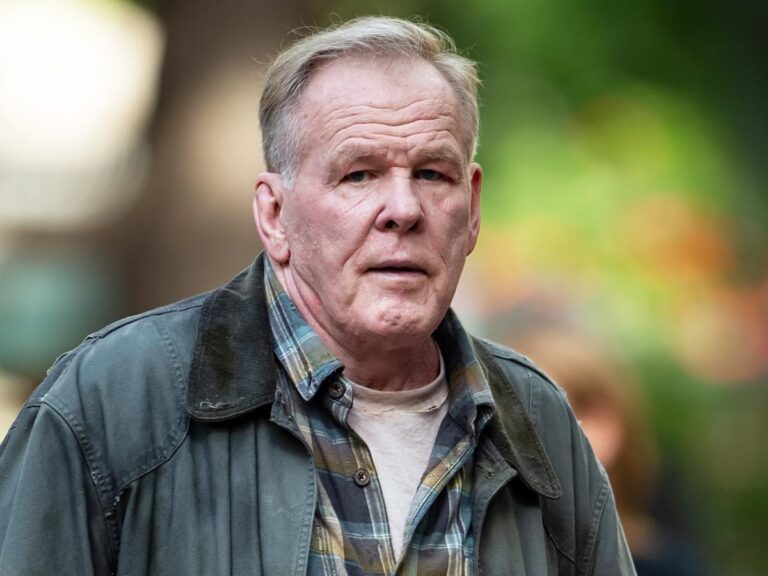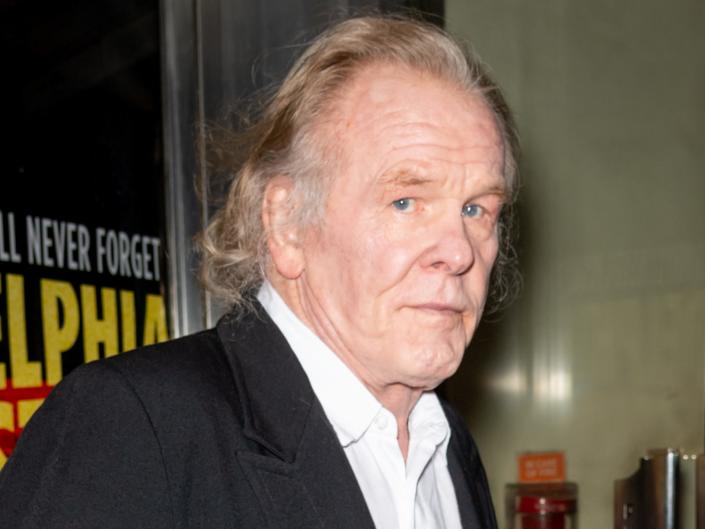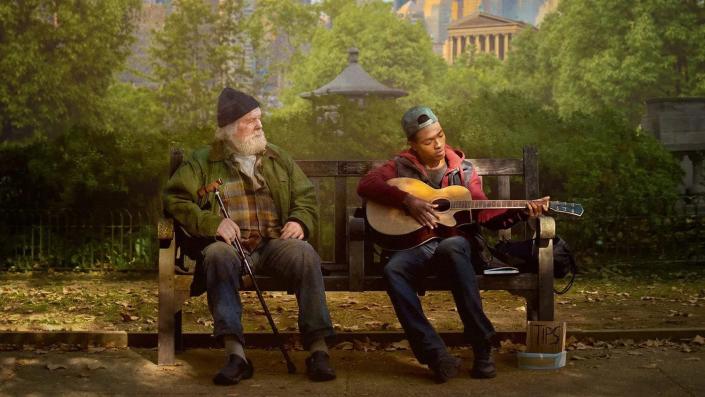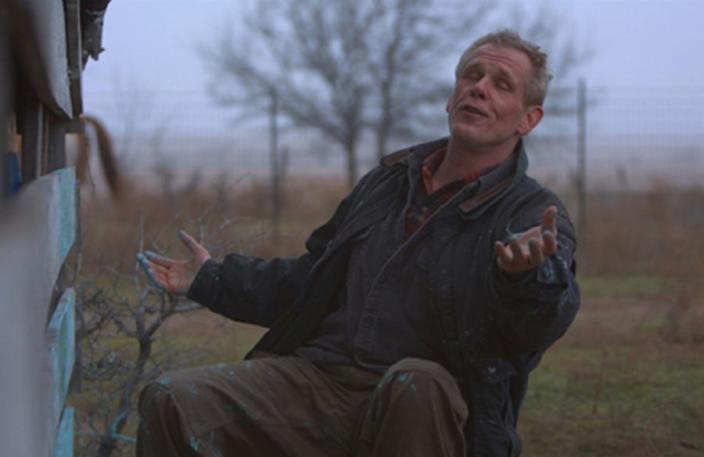
[ad_1]

-
Insider chatted with Nolte about what still makes him want to act at 81 years old.
-
The legend talked about playing a homeless Vietnam War veteran in his latest movie, “Rittenhouse Square.”
-
Nolte also addressed the feud he had with Julia Roberts when they made the 1994 movie “I Love Trouble.”
At 81, Nick Nolte is still searching for a story to tell.
He may not look the same as he did when he was dubbed People’s Sexiest Man Alive in 1992, and his familiar gravelly voice might sound gruffer these days, but what remains is the want to be a performer.
Or, maybe even the need to be one.
“Rittenhouse Square,” an indie currently playing on the festival circuit, is the latest example of this innate desire. Marking the second feature from director Brandon Eric Kamin, Nolte plays Barry, a homeless veteran living in the famed Philadelphia park, Rittenhouse Square. He befriends KJ (Sharon Jones), an aspiring musician who is living on the streets after his pastor mother kicks him out of the house.
As he has throughout his career, Nolte captures an intensity in the role that’s mixed with charm and chaos. It’s a style that made the three-time Oscar nominee a Hollywood star for decades, with movies like “North Dallas Forty,” “48 Hrs,” “Down and Out in Beverly Hills,” “Cape Fear,” “The Prince of Tides,” “Blue Chips,” “Affliction,” and “Warrior.”

His bad-boy antics sometimes overshadowed his talents, like when his disheveled 2002 mug shot went viral before that phrase even existed or when he got into a publicized feud with Julia Roberts while making 1994’s “I Love Trouble.” But it was also those flaws that made his work so captivating.
The New York Times put it best in 1991 when it wrote of the star: “A Nolte hero is rarely a pretty sight… he stands humbly before us a complete and utter mess.”
However, Hollywood has changed in its tastes to the point that Nolte no longer recognizes it. He hasn’t worked on a studio movie since 2019’s “Angel Has Fallen.” His last high-profile part was the same year when he voiced the Kuiil character in the first season of “The Mandalorian.” He spends most of his time now working in the independent-film space and is completely content with that.
“My connection is to the story itself,” Nolte said on a phone call with Insider earlier this week. “The stories in Hollywood are just so few that I don’t know of them anymore.”
Insider chatted with Nolte about what he’s still searching for in the roles he plays, why a fire that destroyed his home in 2008 has made him no longer think about his legacy, and whether he’s ever reconciled with Roberts.

You have played a Vietnam veteran, a homeless person, and an alcoholic several times over your career. For “Rittenhouse Square,” you do all three in the same role. What is it about these certain things that make you want to play them again and again?
Homelessness is something that intrigues me, the scope of the character you can apply to it. Like with “Down and Out in Beverly Hills,” director Paul Mazursky asked me before we started shooting if I would go downtown and spend a few days outside and try to get into the homeless shelters. I went with a friend of Paul’s who is also an actor and we wore ratty clothes and we went downtown and it didn’t take long to get that feel.
In one day, you feel you’re really out there. But we didn’t know the tricks of the street. For instance, when we went to get into a shelter they wouldn’t accept us because we hadn’t been on the streets long enough. They could see that. It was very impressive to be out there on the streets for those three or four days. There’s a lot to playing a homeless person.
Your father fought in World War II when you were a baby so you didn’t really know him until he came back from the war. Is some of your father in these roles when you play a veteran or someone in the service like “The Thin Red Line?”
Yeah. With “The Thin Red Line,” having lived through World War II, I was born in ’41 so I wasn’t conscious enough to know it, but in a way, it informed the frantic of that character in “The Thin Red Line.” It gave me a knowledge.

Playing the Barry character in “Rittenhouse Square,” did memories of how your father was after the war come back to you?
Yes, in a way. Though I only had sketches of stories that he told me. He was a major in artillery. I think he was stationed off Australia. They would set up artillery and fire over miles into the jungle.
I remember I asked him if he ever saw anyone get shot and he told me there was one guy. His name was Red because he had red hair. He never wore a helmet. And my dad told me he got picked off, shot in the head, because of that. That was the only story he ever told me.
Barry is very much a guardian angel to KJ in this movie. The elements of your character — shaky hands, drinking — was that stuff you brought to the character, or was it on the page?
That’s myself and Brandon adding to the homeless lifestyle.

Have you ever been able to pinpoint why so many of your characters drink? I believe it was Debra Winger who once said that you would even go to the director sometimes and say about the character you were playing, “I think this guy is a drinker.”
[Laughs.] Well, if you look at the average American family growing up in the 1950s in the Midwest like I did, they had this cocktail hour they did. And they smoked. There was no thought of cancer at that time.
Smoking and drinking in films is just an art. That’s how you fill those moments of insecurity when you’re in dialogue with someone and the conversation stops. What do you do? You grab a cigarette or a drink. That was something taken from living during those times.
At 81, what makes you want to still do the work? Are there things you’re still searching for?
I’ve always had something artistic outside of myself that I can turn to, so I’m still interested in the stories. I don’t really know what they are, as there are fewer and fewer of them these days. And I don’t find the 80s particularly fun because you’re falling apart in a way. But I’ve always said that I’ll keep on going until I just can’t go anymore.
Is there a particular director you would still like to work with?
It’s been a long while since a director championed my way of working.
Speaking of that, throughout your career you have been known for going to extreme lengths for the characters you played. Is there one you played that you can recall was the most memorable to dive into?
I remember the different stages I went through for “Rich Man, Poor Man.” That was the biggest expanse in age. It went from 16 to 45. Physically, I thought of the weight I was as a sophomore in high school, which was 150 pounds. So I dropped down to that weight and got that boy body back. I ran around that Hollywood reservoir day and night.

Then, there was a period of time after my character Tommy is kicked out of the home. Ten years go by, he becomes a boxer, and he comes back to meet his mother. I knew there had to be a change.
To have that punch-drunk feeling, I plugged up my ears so I couldn’t hear very well. I really had to concentrate and listen to what the other character was saying and then when I talked it was like an echo chamber. It was real loud. So I would soften the voice to talk.
And I also remember for “Beautiful Country,” 20 years or so later, I played a blind Vietnam vet. Before filming I would go down to the eye hospital here in LA and the more I observed, I realized the people who could not see at all, there was something wrong with how their eyes looked. They were glossed over or physically didn’t look right.
So I went to the director and I said, “I’d like to do this role blind.” I got this doctor who would put a lens in my eyes that blocked all the background and another lens that we put on top of it that blocked the iris.

I worked out how many steps it took to get to the bed, and how many steps to the stove. I had all that down. But when we shot one scene, I got up and headed towards the back bedroom and somehow messed up the steps and ended up in the closet. I couldn’t figure out where the hell I was. So, sometimes my method would backfire on me.
There are countless “Hollywood bad boy” stories about you. One is the behind-the-scenes drama between you and Julia Roberts while making 1994’s “I Love Trouble.” She described working with you as “completely disgusting.” Over the years have you ever reached out to her and buried the hatchet?
No, I haven’t. Though it’s buried. I mean it was absurd what we went through. It was partly my fault and a little bit of hers. Julia got married at the beginning of that film and it was one of those things where I just approached it all wrong.
[A representative for Roberts didn’t immediately respond to Insider’s request for comment.]

Now let’s go even farther back. You were considered to play the lead in 1978’s “Superman,” which would have been wild to see. How serious were you considered for it?
Oh, they were interested in me but I turned them off by saying that I would only do it if I could play him as a schizophrenic.
Was that your way of basically sabotaging your chances for the role?
That’s sabotage. It would have been very strange to play that.
Do you think about legacy at all? Do you think about how you want to be remembered?
No, I don’t. Not since I had the fire that burned every piece of remembrance that I had. That’s kind of forced me to not think about it.

Before the fire were you more reflective?
I had my resources. I had a collection of books that I’d been collecting for 30 years. I had the wardrobe from every film I was in.
Wow. What made you want to keep your wardrobe from every movie you’d done to that point?
They were nice clothes, for one thing. And I just wanted to keep it because it was something that was tangible from the characters that I played.
But now it’s a different feeling?
Yeah. Now it’s kind of like starting over again.
This interview has been condensed and edited for clarity.
Read the original article on Insider
[ad_2]